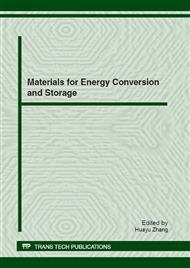p.265
p.269
p.273
p.277
p.281
p.287
p.291
p.297
p.303
Examination of Initial Melting Temperature and Microstructure of Vita Alpha Veneering Porcelain
Abstract:
Through this experiment, we try to determine the initial melting temperature of Vita Alpha porcelain powder and observe micro-structural changes of it. To determine softening temperature point, the powder of Vita Alpha has been sintered at 600°C, 700°C, 800°C and 900°C after mixed with sintering water. It was evaluated through direct observation in combination with scanning electron microscopy (SEM) and differential thermal analysis (DTA). Results shows that with sintering temperature increased, Vita Alpha veneering porcelain was enhanced gradually and the sintering degree was also improved. Sintering at 600°C, the powder was still in original state. But at 700°C the grain size and translucency were both increasing and grain boundaries cannot be clearly distinguished, which means the initial integration. When sintering temperature is at 900°C, Vita Alpha porcelain has been a translucent uniform material. In terms of DTA result, there are no significant endothermic and exothermic peaks in the softening, melting and crystallizing process of Vita Alpha powder. It indicates no significant thermal effect can be found, which infers that Vita Alpha porcelain powder contains a large number of ceramic components, rather than mainly of glass composition. Therefore, the conclusion is initial melting temperature of Vita Alpha porcelain powder is higher than 600°C, less than 700°C. With sintering temperature increased, Vita Alpha porcelain was gradually enhanced. There is no significant thermal effect in the softening, melting and crystallizing process, which indicates that Vita Alpha powder contains a large number of ceramic components, rather than mainly of glass composition.
Info:
Periodical:
Pages:
303-306
Citation:
Online since:
July 2012
Authors:
Price:
Сopyright:
© 2012 Trans Tech Publications Ltd. All Rights Reserved
Share:
Citation:


